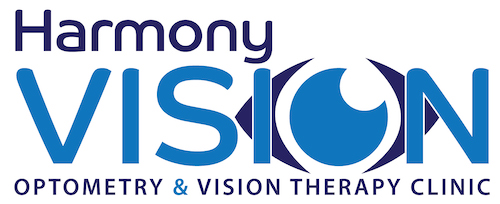Behavioural Optometry Q&A
Q What is Behavioural Optometry?
A. Behavioural Optometry is practiced by qualified optometrists, who have an interest in how the eyes work in conjunction with the whole body ie how visual behaviour interacts with everything we do.
Children’s Vision – Chat to Your Teacher
 The importance of talking with teachers to identify vision issues
The importance of talking with teachers to identify vision issues
A child’s ability to learn is intimately related to their vision. At school, 80% percent of what your child will learn is obtained visually. Think about it, most of their learning happens in front of a whiteboard, computer or book. How the brain and eyes work together has a tremendous impact on the learning process.
Why is vision so essential to learning?
In school, your child will be using a wide range of visual skills including:
Five Common but Hidden Eye Conditions in Children Explained
Many people suffer hidden vision problems because they think that good vision is the same as clear sight. But the truth is vision is so much more than being able to see the whiteboard or read an eye chart. To help you pick up on the signs of hidden vision problems, here are five common but hidden eye conditions explained.
1. Convergence insufficiency
Convergence insufficiency occurs when you have difficulties maintaining how your eyes point together (converge) to focus on near work or read close. It can lead to headaches, eyestrain, double vision, blurred vision and reduced visual performance.
Interestingly enough, not everyone with convergence insufficiency experiences obvious symptoms, and many people can still pass the 20/20 eye chart test. There are many performance related issues that can occur with convergence insufficiency including loss of place with reading, reading avoidance and reduced concentration.
The following is a summary of some of the signs and symptoms that can occur while you’re reading or doing other close work and may include:
• Eyestrain (particularly after computer work or reading)
• Difficulty reading (words blur or move on page)
• Difficulty concentrating
• Short attention span
• Frequently lose their place reading
• Squint or close one eye
• Poor comprehension
• Double vision
• Headaches
• Not completing school work or homework
2. Amblyopia (lazy eye)
Amblyopia, or lazy eye as it is more commonly known, occurs when the eyes don’t work in unison. It often occurs with a difference in prescription between the two eyes or when an eye turn is present (see below). When the brain has difficulty making senses of the input from one eye, it favours the eye that can, by actively suppressing or “tuning out” the conflicting information from the other.
Amblyopia can also occur with Strabismus, is where one eye crosses and is no longer aligned with the fellow eye. The eye can cross in (esotropia) or turn out (exotropia). It’s important to pick this up early in children as their vision can deteriorate in the eye that can’t focus. Because the eyes aren’t working in harmony, it can also cause issues with depth perception, fine motor skills and clumsiness.
Symptoms of lazy eye include:
• An eye that appears to wander either inward or outward
• Squinting, or closing one eye so they can see better
• Complaints about things looking blurry
• Sensitive to sunlight
• Head tilting to try and focus better
• Poor vision
• Bumping into things because they find it difficult to judge distances particularly between objects
3. Accommodative Dysfunction
We often take it for granted that we can shift our focus from near to distance and back again without experiencing blurry vision. This ability to change focus is called accommodation. When accommodation works well, we are blissfully unaware of the process.
For people with Accommodative Dysfunction, holding focus at near distances, and being able to shift focus becomes more difficult. Sometimes this results in obvious symptoms like an intermittent blur, or noticing things take a while to come clear, but other times like with convergence insufficiency, the symptoms are not as obvious. This is because a child can bring things into focus with a lot of concentration so it can go unnoticed, but doing this does put a lot of strain on the eyes and on the ability to concentrate.
Symptoms of Accommodative Dysfunction can include:
• Reading avoidance
• Red or sore eyes
• Headaches
• Difficulty in copying from a board or screen then down on paper
• A diagnosed learning problem
4. Oculomotor Dysfunction
Alice Forsyth Optometrist at Harmony Vision
 Introducing Alice Forsyth
Introducing Alice Forsyth
At Harmony Vision Care we are fortunate to have a team of leading optometrists who are passionate about helping our clients realise their best performance through better vision. One such member is Alice Forsyth, a behavioural optometrist who studied Optometry at UNSW and joined the Harmony Vision Care team in 2014.
In April, Alice traveled to Sydney to attend the 8th International Congress in Behavioural Optometry, along with the rest of the Harmony Vision team. Staying up to date with research and clinical practice is important to Alice, so when not cooking, spending time with her family or enjoying music, Alice enjoys reading and pursuing knowledge. To this end, she is currently studying for her Fellowship, which is a long road, and lots of hours of study!
We recently sat down with Alice for a quick question and answer session to find out why she’s so passionate about behavioural optometry and to help you get to know her a little better.
What inspired you to become a behavioural optometrist?
I was initially drawn into behavioural optometry to find more ways to help my son with his reading. Though I quickly came to appreciate the bigger picture that is vision. Over two million neurons connect the eyes to many areas of the brain (up to 60%), including input to regions that control touch, movement, attention and spatial judgment.
As optometrists, we like to pull things apart to discover how they work, but once we have that understanding we need to link the parts back together again, and there’s always a bigger picture.
What is the most rewarding part of your job?
What is Behavioural Optometry?
What does a vision problem feel like?
You can have clear sight and yet still suffer unknowingly from vision problems. If you experience headaches, blurred vision, tired, itchy or watery eyes, you may already know how uncomfortable visual stress can be.
However, some vision symptoms are more related to performance eg. problems with concentration/attention and reading. These often lead to feelings of failure, attitudes of “I can’t”, avoidance and disruptive behaviour problems, especially in children. A vision problem doesn’t feel good, and leads to a lot of frustration.
Perfect Sight is not Enough
People can make the mistake of thinking that clear sight is the only indicator of good vision.
A sight problem is easily detected and treated with glasses or contact lenses, but vision is much more complex than just “sight”.
There are many aspects of your vision that allow you to concentrate, maintain attention and remember things, which require additional testing beyond testing your sight, prescription and eye health.
If you are a student, you may read almost three times the number of textbooks your grandparents did. If you work in an office, you probably use your vision for hours of close-up work, including looking at a computer screen. A sight test does not measure how well your eyes cope with long periods of close work.
What is Behavioural Optometry?
At first the term “behavioural” seems a little strange to some people when they think about what an optometrist does. It may also seem a bit “alternative” to some. There’s nothing mystical about this approach, in fact it makes sense to most people once they think about it. So let’s demystify what behavioural vision care means.
Practicing with a behavioural vision care philosophy means that we do all the regular sight and eye health checks, but as a routine we also do comprehensive assessments of those visual skills that affect learning, concentration, spatial awareness and other quality of life issues. We take into consider all your “visual behaviours” – what you use your vision for and how efficiently you do it. We also like to consider and understand how a vision problem, will cause you to alter how you go about doing things in your daily life ie how you alter your “behaviour”.
For example, if a vision problem makes it uncomfortable for a child to read, then they will alter their behaviour by avoiding reading, slowing down reading or pulling the book closer as they try harder to deal with the problem. Symptom like those in the above example are not something a person will not alwasy say unless directly asked, just like many of the symptoms used to pick up vision problems.
We have a lot of experience in treating vision problems that affect concentration and optimum learning, and those vision problems that cause headaches, eye strain and problems with depth perception. We offer services such as Clinic Based Visual Therapy and Orthokeratology – both non-surgical techniques to enhance and correct vision problems. We have busy visual training practice with experienced staff.

